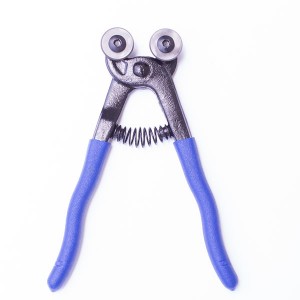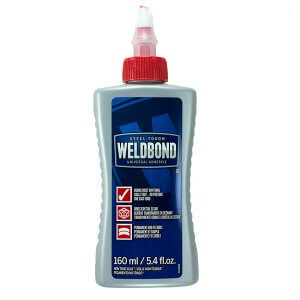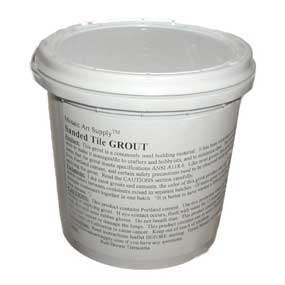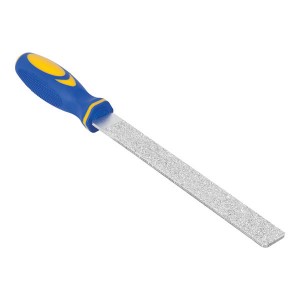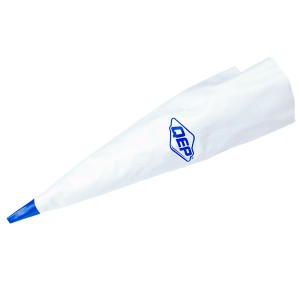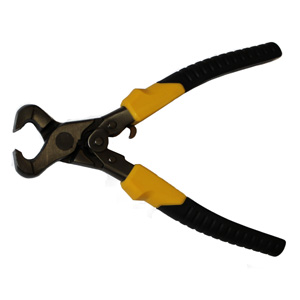Summaries of some of the most important tools and supplies we offer for working with mosaic tile.
The mosaic supplies you need depend on the type of mosaic tile you are using (glass or ceramic or stone) and how you plan to install them. Five minutes of reading can save you five hours of frustration on your mosaic project.
For a complete listing of tweezers, sponges, gloves, dental picks, spatulas, etc., visit our mosaic tools page.
Mosaic Glass Cutter
The most important tool for working with glass mosaic tile is the Mosaic Glass Cutter, which is a compression tool like a tile nipper, but the replaceable blades are shaped like wheels.
While a regular tile nipper tends to crush and splinter glass tile, the Mosaic Glass Cutter allows the artist to make cleaner, more precise cuts. (Tile Nippers were made for ceramic materials.) With proper use, the wheel-shaped blades stay sharp and effective for hundreds and hundreds of hours of use.
We also sell replacement blades.
Weldbond
An amazing product. Weldbond is a water-based adhesive that looks and handles just like plain white glue yet cures stronger than many of the smelly solvent-based glues. The manufacturer’s brochure calls Weldbond “the most versatile, non-toxic, non-flammable adhesive on the North American market.” We don’t think this is an exaggeration. Weldbond is probably the most-used adhesive among mosaic artists with no close second. It bonds to hundreds of different materials and is very water-resistant once it dries.
The new 160ml bottle (pictured) is light weight and easy to handle, but we also sell a 420ml bottle and 3 litre jug. We recommend using the jug to refill one of the smaller bottles. Easy clean-up with soap and water.
Note that Weldbond is very water resistant but not water proof. Artists use Weldbond for back-splashes and vertical surfaces where water can drain off, but you shouldn’t use it for shower floors or pools or fountains. For outdoor and wet mosaics, use thinset mortar instead of adhesives.
Grout
Our grout is a traditional portland-cement grout that includes sand. Sand is needed for strength when the gaps between tiles are 1/8″ or greater, but sanded grout can also be used when the gaps are smaller. All of the mosaics at the Riverson gallery were made with sanded grout.
Choosing A Grout ColorGrout can totally change the look of a mosaic, and it is possible to ruin a mosaic with the wrong color grout. To make the individual tiles stand out visually, you have to choose a grout color that CONTRASTS the colors of the tiles. Avoid choices like grey grout with grey tile. In my experience, a grout with some color almost always looks better than white grout.
How Much Grout Do I Need?The amount needed depends as much on the gaps between the tiles as it does the total area. If your gaps are the standard 1/16 inch, then you will probably use less than 1 lb. of grout per square foot. If you have thick tile with large gaps, you could use over 1.5 lb. Keep in mind that you have to budget extra for all of the wasted grout that falls off the sides of the mosaic.
